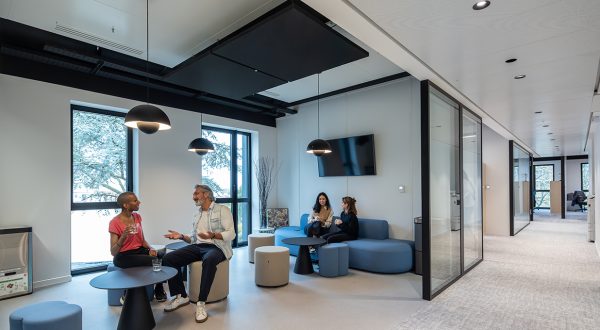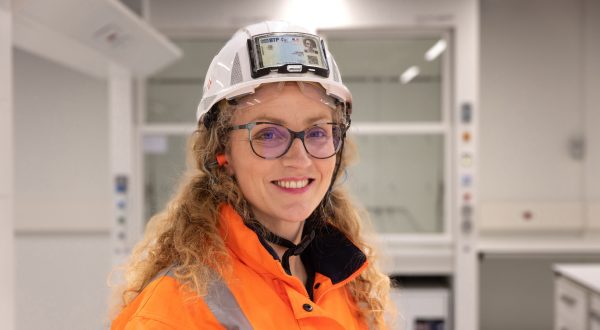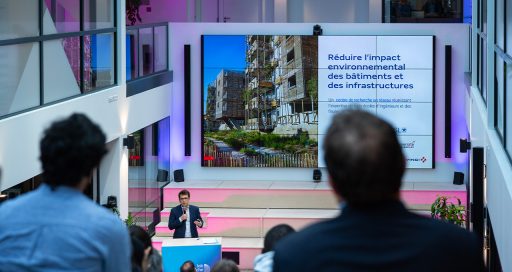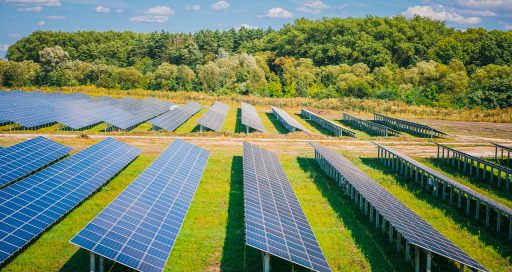The water footprint: the next challenge for commercial real estate
Reading time: 4 min
The depletion of water resources demands a reduction in the water footprints of buildings. This can often require substantial alterations. It also requires expertise, such as that of VINCI Energies Building Solutions, which has developed a calculator for determining the potential for reclaiming so-called non-conventional water resources (rain and grey water).

As the frequency and intensity of extreme weather events increase, with droughts and water stress becoming increasingly common, managing the demand for water is now a political priority. In France, for example, on 30 March 2023, the government enacted its first-ever water action plan. Its aim is to reduce water extraction by 10 percent by 2030, and every economic sector is expected to contribute.
The issue has particular resonance in the highly water-intensive real estate sector, where its water footprint is a question of both social responsibility and asset values.
Ordered by the government to start reducing its waste consumption from 2024 onward, the sector has two major action levers for making this happen: reducing consumption of extracted drinking water and reclaiming so-called non-conventional water resources for indoor or outdoor uses where water need not be of drinkable quality.
“Including water management criteria in certification standards can only encourage industry players to speed up their efforts.”
Rainwater, grey water from sinks or showers, the condensation produced by energy equipment: all these and more are becoming valuable resources. It is believed that using non-conventional water resources on a national scale could avoid the extraction of several million cubic metres of water from groundwater and watercourses every year.
France: must do better
France is far from top of the class in this area, with only 1 percent of waste water reclaimed, compared with 8 percent in Italy and 14 percent in Spain.
“Commercial real estate is not doing any better than other sectors,” says Arnaud Morosoli, Energy Project Manager at VINCI Energies Building Solutions. “Including water management criteria in certification standards can only encourage industry players to speed up their efforts.”
But businesses still have to be convinced to invest. Solutions to reclaim, store and redistribute non-conventional water require substantial works and equipment, and the return on investment can be slow, taking several years. “It is therefore important to make informed choices using decision-making aids and take advice from experts,” says Arnaud Morosoli.
Expert tools
To ensure good-quality reclaimed rainwater and meet economic criteria, it is essential to pay special attention to the sizing of installations. Expert tools are available, such as the one developed by VINCI Energies Building Solutions, a calculator that can determine the potential for rainwater reclamation on a given site and size the storage tank accordingly, by combining data about the type and surface area of the building’s roof, local rainfall, and the building’s water needs: toilets, watering planted areas, and cleaning equipment such as windows and solar panels.
As Arnaud Morosoli explains, “Based on this data provided by the building’s owner or operator, or compiled directly from on-site audits and national meteorological services, we apply a 2018 standard, NF EN 16941‑1, to calculate the correct size for the rainwater storage tank.”
Incorporating 2050 climate data
According to the French government’s Explore 2070 project, annual flow rates in France’s watercourses could fall, based on a median greenhouse gas emissions scenario, by between 10 and 40 percent by 2046–2065, with groundwater recharge down 10 to 25 percent.
VINCI Energies Building Solutions also wanted to fine-tune its calculations by incorporating climate projections from the DRIAS database, which provides region-by-region rainfall scenarios for 2020–2050. A valuable additional feature of the tool is that it allows users to include grey water, and also condensation from climate control installations, which in large enough buildings can be a significant resource.
01/18/2024





